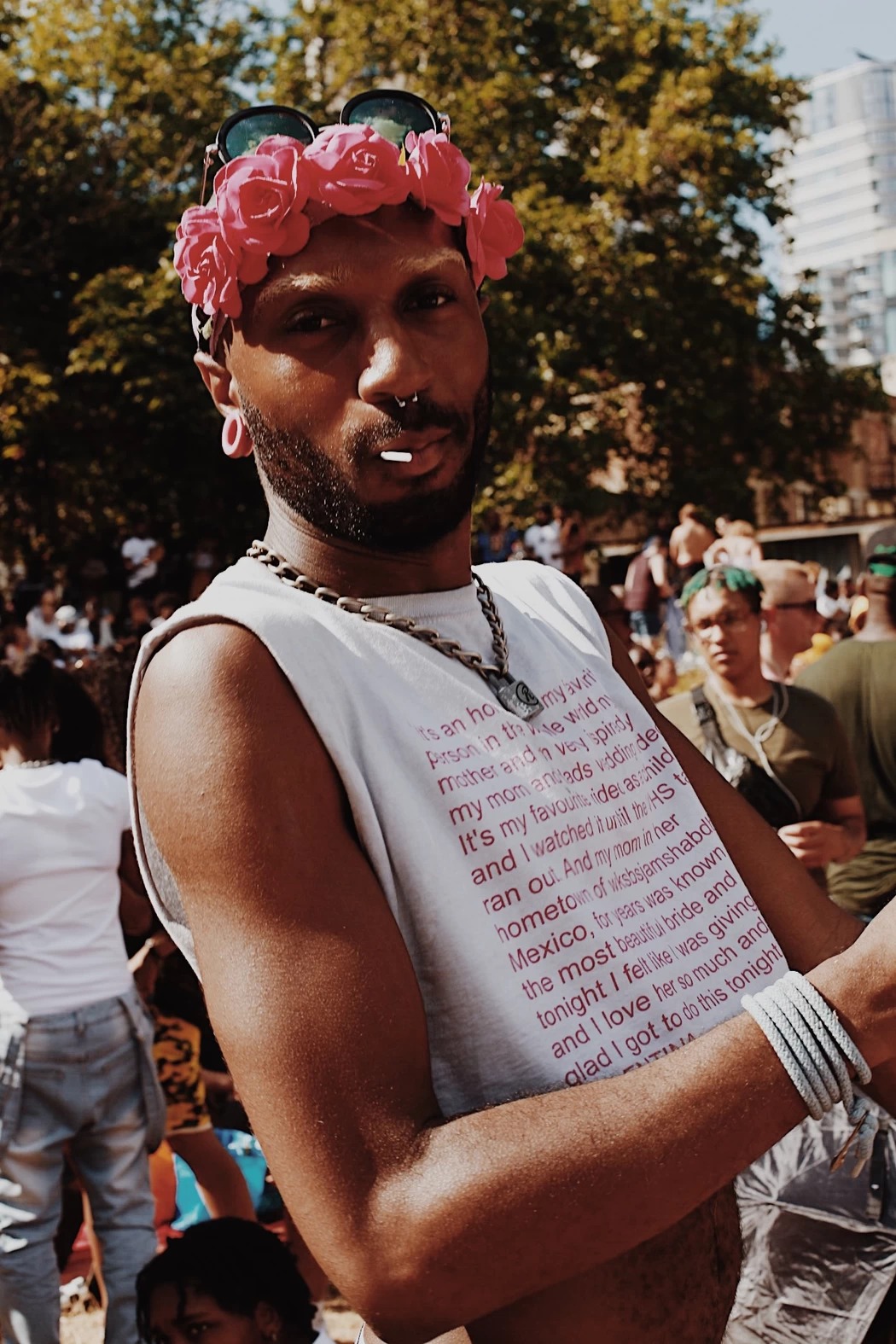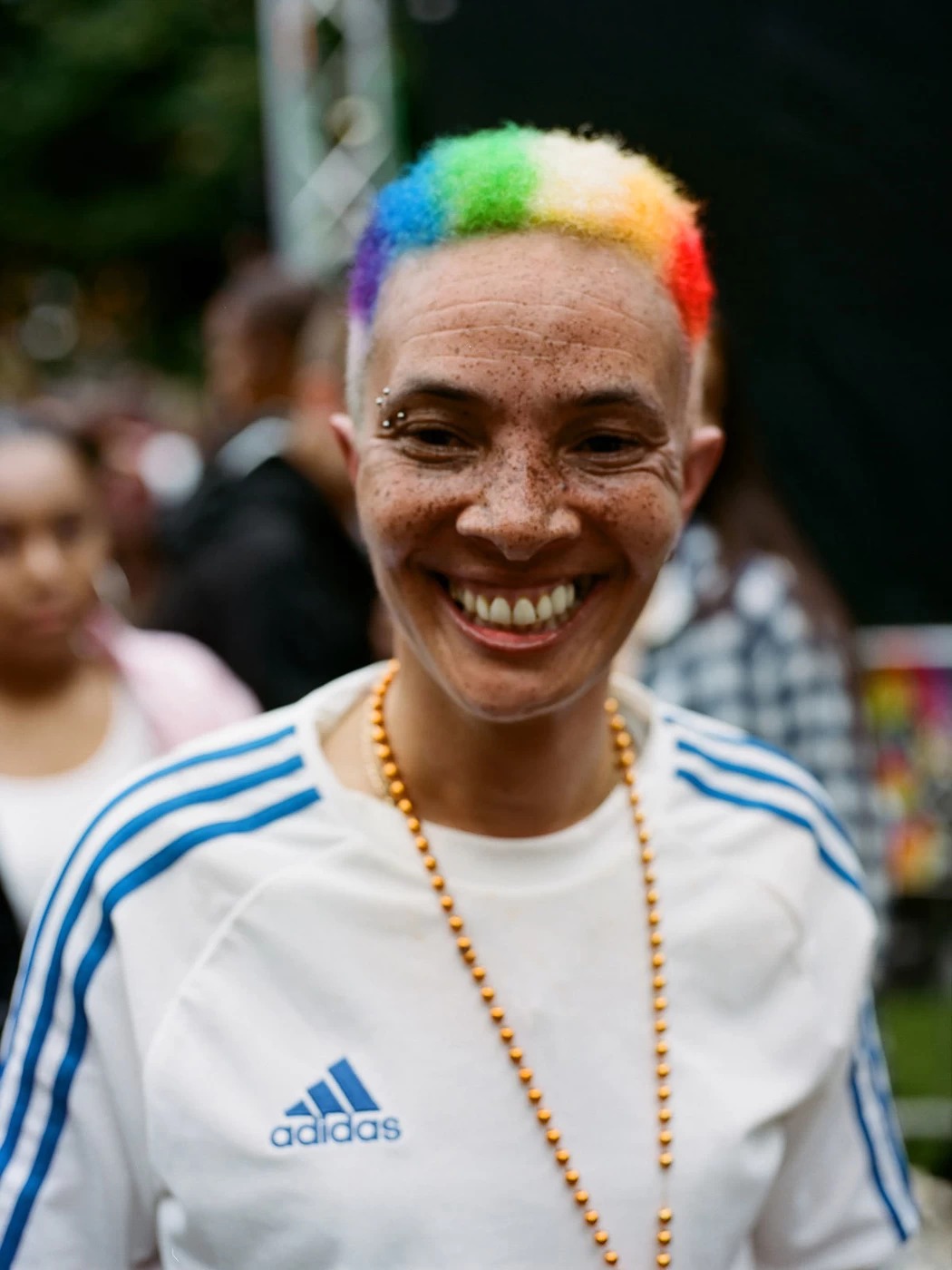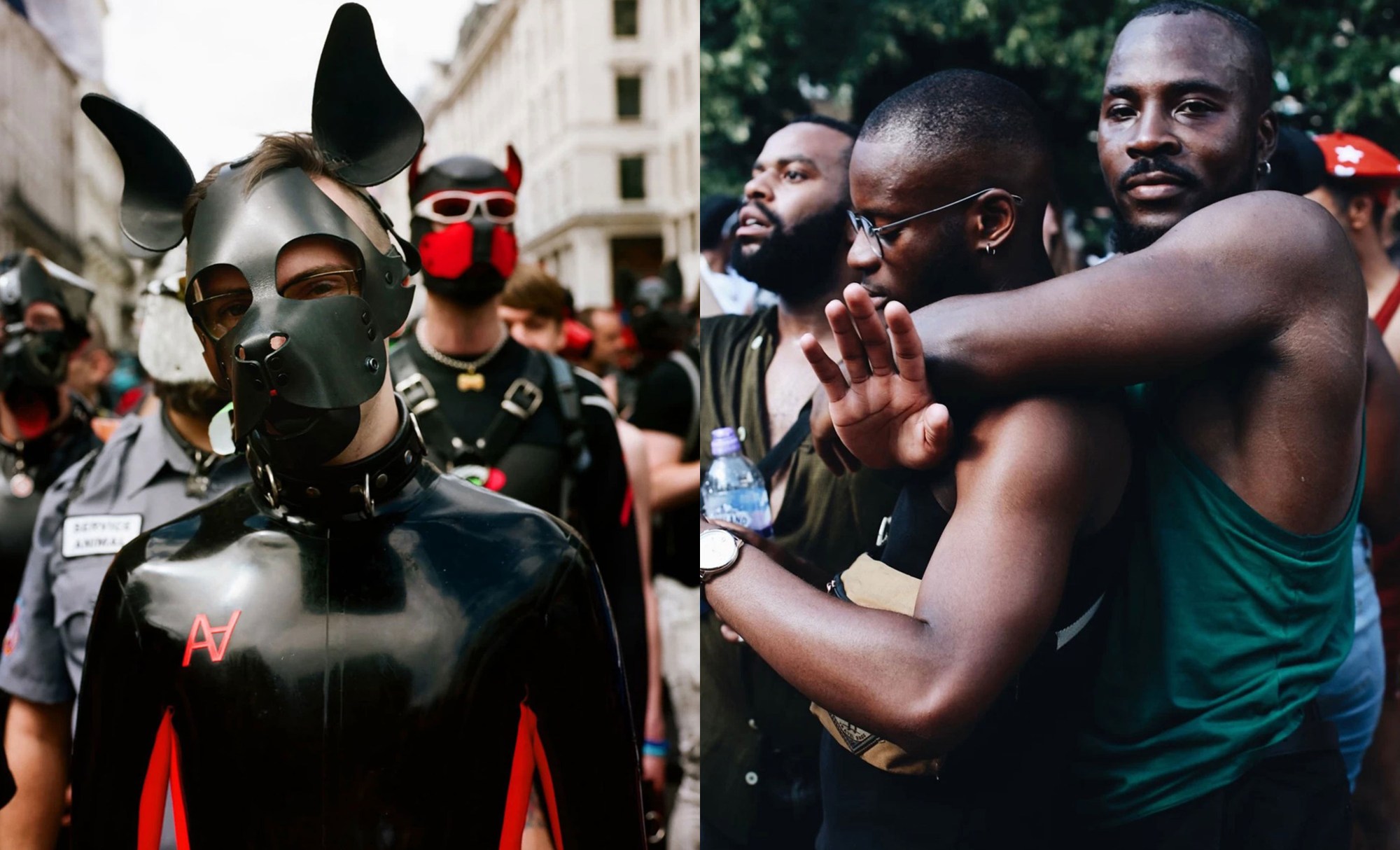Queer men have always worn outlandish clothing within the safety of their own spaces but Pride is different; it’s an occasion which allows you to dress however you want, in broad daylight, in the centre of the city. Fashion at Pride is a way of being defiantly visible, satirising the straight world, and experimenting with gender.
In Pride Parades: How A Parade Changed the World, Katherine Bruce writes that “having fun in a new way — counter to one that is prescribed by society — can be a method to urge society to change. In this way, fun is prefigurative, meaning that it acts out the world that activists hope to make a reality.” The same applies with fashion: dressing in ways which contradict societal expectations of gender or heterosexuality, acts as a critique.
It took some time to get to this point. Before the Stonewall riots, the Mattachine Society — a gay rights group founded in 1950 — had been organising protests for years. Known as ‘The Annual Reminder’, these events were a far cry from the flamboyance of Pride today. Nowhere was this more apparent than in the strict dress code of jackets and shirts for men, with dresses for women. The idea was to avoid alienating heterosexual onlookers, most of whom would be predisposed to hostility.

Stonewall represented a radical departure from this appeal to respectability. According to a contemporary account by writer Lucian K Truscott IV, “the sudden spectre of ‘gay power’ erected its brazen head and spat out a fairy tale”. The day after the riots, protestors took to the streets in as much a spirit of revelry as anger. At the time, fashion wasn’t seen as something frivolous or separate to the serious business of political protest: Truscott writes, “if Friday had been pick-up night, Saturday was date night”, complete with ‘posing and primping’, and ‘flaunt[ing] it’. Drag formed a crucial part of this visual spectacle but, looking at Fred W. McDarrah’s photos taken at the time, not all of the fashion on display was outré. Much of it doesn’t even read as particularly queer: many of the rioters are wearing over-sized white shirts, striped black tees, short-shorts or sensibly cut trousers.
The first gay Pride proper took place in New York the following year. London didn’t see its own until three years later, in 1972. This event was sparsely attended (with 700 people present, compared to 1 million in 2018) but the attendees made up for the lack of numbers by being visibly and audaciously queer. Peter Thatchell, who was present, writes of “extravagant costumes and cheeky banners poking fun at homophobes like Mary Whitehouse.”
DJ and artist Jeffrey Hinton was involved in the Gay Liberation Front and attended his first Pride in 1974. We meet for a coffee by Regent’s Canal and I ask Hinton whether fashion has always been important at Pride. “Particularly in the past,” he says, “most men would find it difficult to wear a pair of hotpants and heels at their job in the bank. That aspect of Pride has always been there — it’s about giving yourself permission to do what you like. The idea of being able to walk down Oxford Street, maybe dressed more femininely than you normally would, and not get attacked is very liberating.”

For many queer men Pride offers an occasion to dress in a more “feminine” style than they normally would. But Pride fashion also has a tendency towards hypermasculinity. Leather has been a mainstay since the 70s, not to mention constituting a rich subculture in its own right. If leather culture emerged as a response to contemporary stereotypes of heterosexual masculinity, it has become a look which signifies, above all, its own queerness. This is also true of harnesses or mesh, two other staples of Pride fashion, with the former being explicitly drawn from the aesthetics of BDSM. Wearing these clothes conveys an exaggerated masculinity which is just as performative as going in drag. After all, if you wanted to be read as masculine in a straight way, you’d be better off turning up in a plain white T-shirt and a pair of shorts from Superdry (which, sadly, all too many do). The fashion of leather and harnesses, then, represents both a celebration and a parody of masculinity.
But if Pride fashion is a way of exaggerating gender, in either direction, what does this performance mean if you’re trans? As a cis gay man, one thing I do get from Pride is a feeling of overwhelming safety-in-numbers — the sense I can do or wear whatever I want. But is this true for everyone?
Robin Craig, a trans man and PhD student at Roehampton University, explains that Pride isn’t always a welcoming place. “There’s a palpable sense of danger,” he says, “particularly since last year when TERFs (trans-exclusive radical feminists) took over the front of the parade. As well as this faction, there are generally transphobic cis people, too. The small, vocal minority of TERFs have just made them bolder.”
Does this atmosphere affect his fashion choices for Pride. “At the point I’m at now,” he says, “I’m passing consistently, so I’m starting to experiment more with feminine masculinity — with make-up or flamboyant shirts or wearing women’s clothing in a different way than I was before. It’s really enjoyable. Two years ago I wasn’t passing at all so I wore quite boring T-shirts and shorts. I was just desperate to be accepted into gay male spaces. I felt like an interloper, like I was going to be discovered and thrown out.”

I ask Robin whether he would dress differently at Trans Pride. “Yes, I’d be more comfortable being visibly trans there. But at the mainstream event, I almost want to pass as a cis man, simply because I don’t want the hassle of trying to claim space. This affects what I wear: hiding my surgery scars, not wearing trans colours, assimilating more into cis gay men fashion. Part of me wants to be more visibly trans at Pride as a ‘fuck you.’ But, on the other hand, I’m also really tired of having to make these defiant gestures.”
So to what extent does men’s fashion at Pride still matter today? It’s true that many aspects of gay style have been co-opted by the fashion industry, which weakens its subversive potential. Debates about the appropriation of mesh have been bubbling over for a while but the material has really taken off as a streetwear trend this summer.
However, no matter how widely these styles are adopted by the mainstream, gay and trans men are still more likely to encounter hostility for wearing them than their straight counterpoints. If you’re a Clapham rugby bro and you wear a mesh shirt on a night out, getting the piss taken out of you is the worst that’s going to happen. But with homophobic and transphobic hate crimes on the rise, the consequences can be more serious for gay and trans men. Virgil Abloh might have sent Timothee Chalemet down the red carpet in a harness, but that doesn’t make it any safer for queer men to wear one in public.
Although it’s a disgusting situation that so many trans people feel uncomfortable at Pride, it can still be a site for playfulness and experimentation, a respite from the self-surveillance which often goes hand-in-hand with being queer. One transmasculine friend tells me, “You can use it as a safe space to try out gender experimentation before you’re ready for it as part of daily life”. We just need to fight to ensure that Pride functions this way for everyone in our community.


